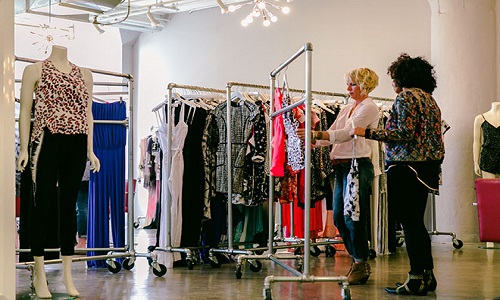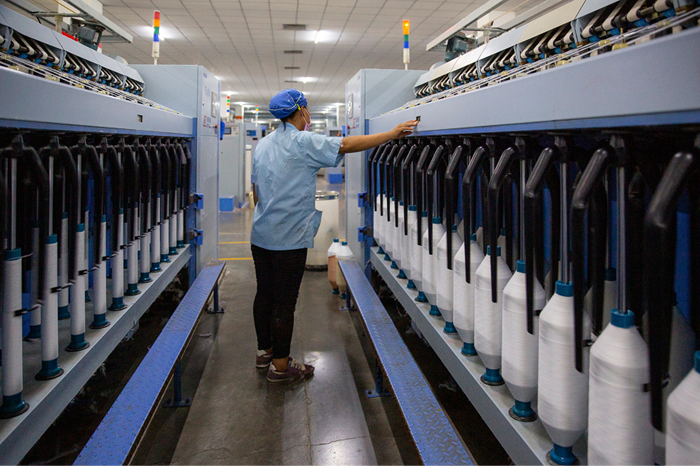"The axes of global trade are shifting, amid a surge in commerce between emerging economies in the global South. The dynamics may lead to a rethinking of sourcing and pricing strategies in the year ahead. That’s why “Trade 2.0” is one of the 10 big trends to watch out for in 2019 reveals the McKinsey’s latest ‘State of Fashion’ report, written in partnership with the Business of Fashion (BoF). As 2019 begins, fashion companies find themselves in a crosscurrent of trade-related news flow."
 Recent talk of trade shifts between the United States and some of its key trading partners has brought forth the inherent sensitivity of fashion to policies and politics that shape cross-border trade.
Recent talk of trade shifts between the United States and some of its key trading partners has brought forth the inherent sensitivity of fashion to policies and politics that shape cross-border trade.
Trade tensions to lead to disruption
The axes of global trade are shifting, amid a surge in commerce between emerging economies in the global South. The dynamics may lead to a rethinking of sourcing and pricing strategies in the year ahead. That’s why “Trade 2.0” is one of the 10 big trends to watch out for in 2019 reveals the McKinsey’s latest ‘State of Fashion’ report, written in partnership with the Business of Fashion (BoF). As 2019 begins, fashion companies find themselves in a crosscurrent of trade-related news flow. A sharp rise in trade tensions between the United States and other large economies seems set to increase costs for some players and increase the risk of disruption.
While China and the United States are raising tariffs against each other, China is trying to make some imports cheaper. A Chinese government decision to cut import duties led LVMH to reduce prices by 3 to 5 per cent in July 2018 on some items sold in China. In September 2018, China reduced tariffs for textiles and construction materials to 8.4 per cent, from 11.5 per cent. Any reduction of tariffs usually must be offered to all countries equally under World Trade Organization rules, but according to China, these US goods are subject to retaliatory tariffs.
Brexit to impact fashion companies across the world
A report by the UK Trade Policy Observatory suggests due to high level of exports, reliance on international talent, and dependence on raw materials from abroad, the UK textiles, apparel, and footwear industry will be one of the hardest hit by the country’s exit from the European Union in March 2019. Brexit will also affect fashion companies in other countries, particularly those being paid in sterling.
dependence on raw materials from abroad, the UK textiles, apparel, and footwear industry will be one of the hardest hit by the country’s exit from the European Union in March 2019. Brexit will also affect fashion companies in other countries, particularly those being paid in sterling.
The US fashion sector is also facing trade-related risks. According to the United States Fashion Industry Association’s 2018 Fashion Industry Benchmarking Study, “protectionist trade policy agenda” in the United States is the number one business challenge. Before 2017, it never ranked higher than eight. The United States has announced tariff hikes on $200 billion worth of goods from China, including clothing.
Companies plan shift from China
Some fashion companies have begun to reconsider their presence in, and exposure to, countries where tariff barriers could further increase the cost of doing business. Puma, Steve Madden, and Wolverine World Wide are among companies that stated they would consider moving production out of China. Many companies had begun this process before the trade tensions mounted, but they cite the recent developments as a tipping point.
New trade routes being developed
While concern over trade tensions is rising, new agreements are being signed and new trade routes being developed. The EU has recently entered into new agreements including clothing and apparel with Canada, Mexico, Japan, Singapore, Vietnam, and several countries from Eastern Europe.
Finally, the Comprehensive and Progressive Agreement for Trans-Pacific Partnership and Regional Comprehensive Economic Partnership (RCEP) will enable more free trade between Asia and South America and within Asia.
Overall, trade-related forces will drive two key dynamics in 2019. Escalating trade tensions will see international brands rethink their sourcing strategies, perhaps to the benefit of countries involved in newly negotiated trade agreements. A further increase in South–South trade, especially between emerging countries in the Asia–Pacific region, is likely. Fast fashion, which depends on short lead times, will need to find new strategies to maintain delivery speed and production quality.












